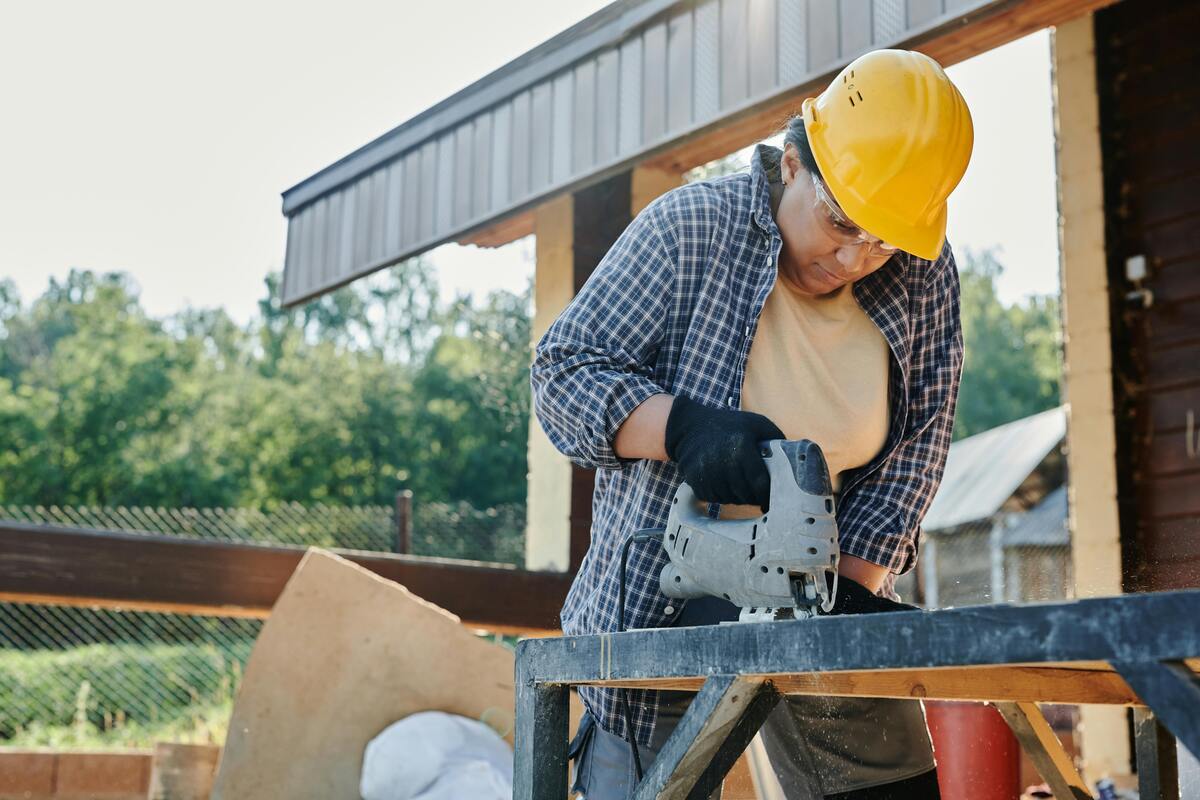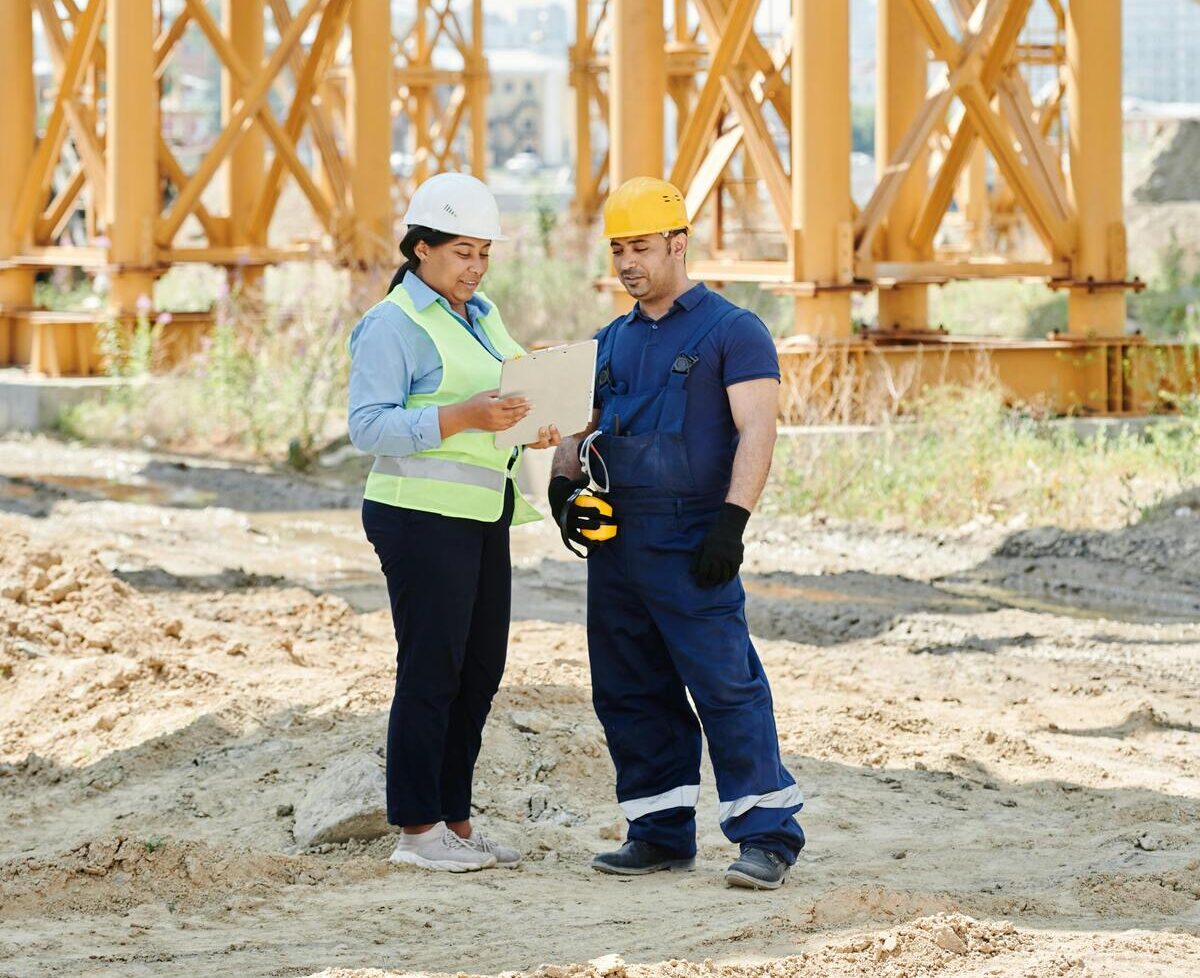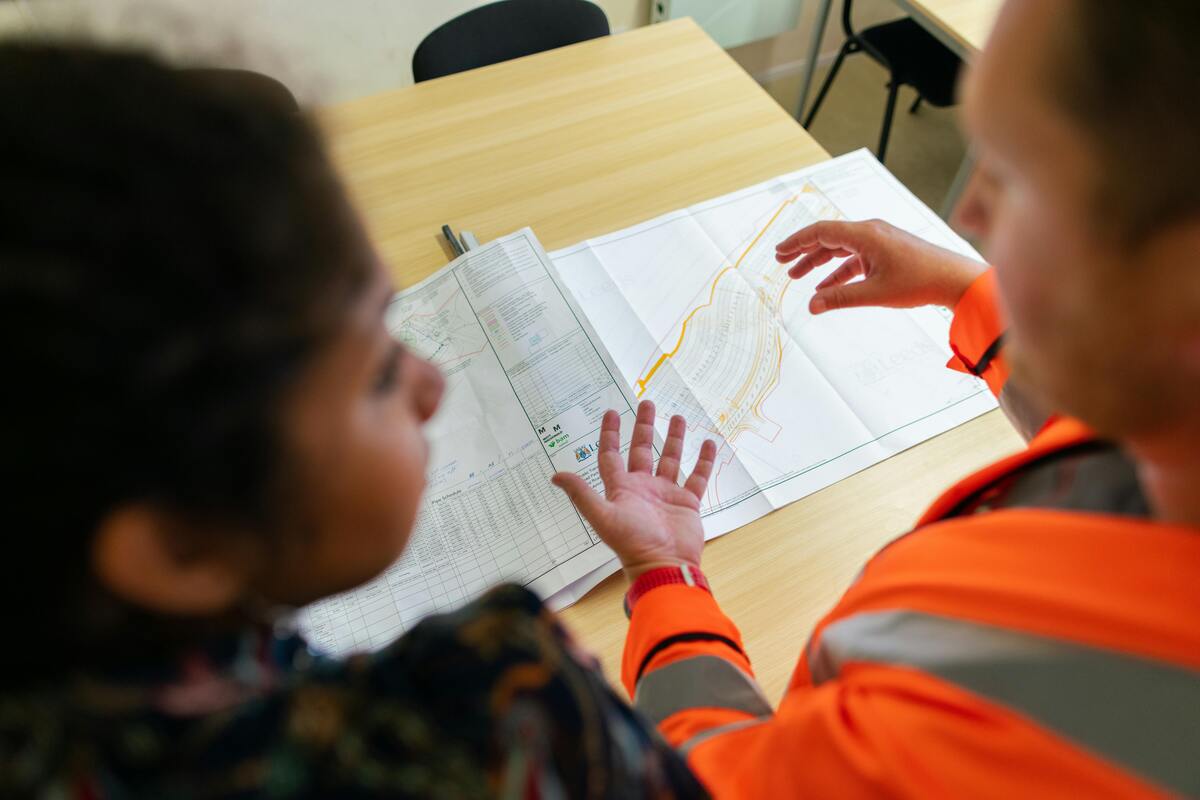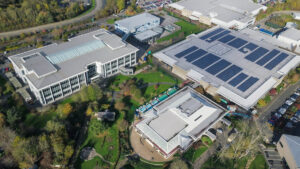The construction industry stands as a cornerstone of modern civilization, shaping the skylines of our cities and the infrastructure that supports our daily lives. Yet, amid the clang of hammers and the hum of machinery, there exists a narrative of untapped potential and underrepresented voices: that of women in construction.
Historically viewed through a lens of male dominance, the construction sector has long grappled with systemic barriers that have hindered the participation and advancement of women. Despite comprising nearly half of the global workforce, women represent only a fraction of the construction industry, with statistics revealing a stark reality. According to recent data, women make up a mere 9% to 12% of the construction workforce worldwide, highlighting the persistent gender disparity that pervades the sector.
However, beneath these statistics lies a narrative of resilience and progress. In recent years, concerted efforts to address gender bias and promote diversity have begun to reshape the landscape of women in construction. From initiatives aimed at attracting and retaining female talent to the growing recognition of the economic and social benefits of gender diversity, the industry is undergoing a transformation. As we embark on a journey to explore the challenges, opportunities, and impact of women in construction, it becomes evident that their voices are not only vital but essential to the future of the industry.
Table of Contents
Historical Context of Women in Construction
In the historical context of the construction industry, women have long faced significant barriers to entry and advancement. Traditionally viewed as a male-dominated field, construction has been marked by deeply entrenched gender stereotypes and systemic biases that have limited women’s opportunities for participation and progression within the industry.
Throughout much of history, societal norms and expectations relegated women to roles perceived as more suitable or traditional, such as homemakers, caregivers, or those in clerical positions. This cultural mindset extended into the professional realm, where industries like construction were largely regarded as the domain of men. As a result, women were systematically excluded from many aspects of the construction workforce, with limited access to training, education, and career advancement opportunities.
The construction industry’s reliance on manual labor and physically demanding work further reinforced the perception that it was unsuitable for women. This perception, combined with discriminatory hiring practices and workplace cultures that were often unwelcoming or hostile to women, created significant barriers to entry. As a result, women remained vastly underrepresented in construction trades, engineering roles, and leadership positions for much of history.
Suggested article to read: The Future of Smart Construction; 2024 Review
Despite these challenges, women have made significant contributions to the construction industry throughout the years, often in less visible or traditionally feminine roles such as administrative support, design, or project management. However, their achievements have frequently gone unrecognized or undervalued, perpetuating the notion that construction was a male-dominated field.
Efforts to challenge these gender norms and increase women’s participation in construction began to gain momentum in the latter half of the 20th century. The women’s liberation movement and the push for gender equality in the workforce brought attention to the barriers faced by women in traditionally male-dominated industries, including construction. Legal protections against gender discrimination, such as the Civil Rights Act of 1964 in the United States, provided a framework for addressing discriminatory practices in hiring, promotion, and workplace conditions.
Despite these advancements, progress toward gender parity in the construction industry has been slow and uneven. Women in construction continue to face persistent challenges, including unequal access to training and apprenticeship programs, workplace harassment and discrimination, and a lack of support networks and mentorship opportunities. However, shifting societal attitudes, coupled with efforts by industry stakeholders to promote diversity and inclusion, have begun to pave the way for greater opportunities for women in construction.
Overall, the historical context of women in construction reflects a complex interplay of social norms, institutional barriers, and cultural perceptions that have shaped the industry’s gender dynamics over time. While significant strides have been made toward greater gender equality, there is still much work to be done to ensure that women have equal access to opportunities and are able to thrive in all aspects of the construction industry.
Suggested article to read: What is Construction Digitization? 2024 Guide

Current Landscape
The current landscape of women in construction reflects both progress and ongoing challenges. While women have made strides in breaking into traditionally male-dominated roles, they continue to be underrepresented in many sectors of the construction workforce.
Representation: Women make up a small percentage of the overall construction workforce, typically ranging from 9% to 12% globally. However, this percentage varies by region and sector, with some areas and fields seeing higher levels of female participation than others. For example, women are more likely to be found in administrative and support roles, project management, design, and architecture, while they remain significantly underrepresented in skilled trades such as carpentry, plumbing, and electrical work.
Trends: Despite the historical underrepresentation, there has been a noticeable trend towards increasing participation of women in construction in recent years. This trend is driven by various factors, including changing societal attitudes towards gender roles, increased efforts by industry stakeholders to promote diversity and inclusion, and the growing demand for skilled labor in a rapidly evolving construction market.
Suggested article to read: Construction Robotics; 2024 Guide
Initiatives: Many organizations within the construction industry have launched initiatives aimed at attracting and retaining women in construction careers. These initiatives include mentorship programs, outreach efforts targeting young women and girls, scholarships and training programs specifically designed for women, and the promotion of inclusive workplace cultures that value diversity.
Challenges: Despite these positive developments, women in construction continue to face significant challenges. These include systemic barriers such as gender bias and discrimination, lack of access to training and apprenticeship programs, workplace harassment and hostile environments, and the absence of support networks and mentorship opportunities. Additionally, the physical demands of certain construction roles and the prevalence of a male-dominated culture within the industry can further deter women from pursuing careers in construction.
Suggested article to read: Air Quality in Construction; 2024 Guide
Benefits of Diversity: There is growing recognition within the construction industry of the benefits of gender diversity. Studies have shown that companies with diverse workforces, including gender diversity, tend to be more innovative, productive, and profitable. By embracing diversity and inclusion, construction companies can tap into a broader talent pool, improve employee satisfaction and retention, and better reflect the diverse communities they serve.
Future Outlook: The future outlook for women in construction is promising but depends on continued efforts to address the barriers and biases that have historically hindered their participation. By fostering a more inclusive and supportive environment, investing in training and development programs, and promoting opportunities for advancement, the construction industry can harness the full potential of its female workforce and drive positive change for the future.
Suggested article to read: Change Management in Construction; 2024 Guide

Challenges and Opportunities
The challenges and opportunities facing women in construction are multifaceted and require comprehensive strategies to address.
Challenges:
- Gender Bias and Discrimination: Women in construction often encounter gender bias and discrimination in hiring, promotion, and workplace interactions. Stereotypes about women’s capabilities in physically demanding or male-dominated roles can limit their career advancement and opportunities for skill development.
- Lack of Access to Training and Apprenticeship Programs: Many women face barriers to accessing training and apprenticeship programs in construction trades due to limited availability, gender-specific requirements, and biases in the selection process. This lack of access can hinder their ability to acquire the necessary skills and certifications for career advancement.
- Hostile Work Environments: Women in construction frequently experience harassment, exclusion, and hostility in the workplace. This can create a challenging and unwelcoming environment that negatively impacts their morale, job satisfaction, and mental well-being.
- Work-Life Balance: Balancing the demands of a career in construction with family responsibilities and personal commitments can be particularly challenging for women. The long hours, irregular schedules, and physical demands of many construction roles can make it difficult to achieve a satisfactory work-life balance.
- Underrepresentation in Leadership Roles: Women are significantly underrepresented in leadership positions within the construction industry. The lack of female representation in senior management and executive roles perpetuates gender inequality and limits the influence of women in decision-making processes.
Suggested article to read: Construction Insurance; Comprehensive Guide 2024
Opportunities:
- Diversity Initiatives: Construction companies can implement diversity initiatives aimed at creating more inclusive and equitable workplaces. This includes actively recruiting and retaining women, implementing anti-discrimination policies, and promoting diversity training for employees at all levels.
- Mentorship and Support Programs: Mentorship programs can provide valuable support and guidance to women in construction, helping them navigate career challenges, develop new skills, and advance professionally. Pairing experienced female mentors with aspiring women in construction can foster a sense of community and empowerment.
- Education and Training: Increasing access to education and training programs for women in construction trades is essential for building a diverse and skilled workforce. Outreach efforts targeting young women and girls can help challenge stereotypes and encourage interest in construction careers from an early age.
- Flexible Work Policies: Implementing flexible work policies, such as telecommuting options, flexible scheduling, and family-friendly benefits, can help to accommodate the diverse needs of women in construction and support their efforts to achieve a better work-life balance.
- Leadership Development: Providing leadership development opportunities for women in construction is crucial for increasing their representation in senior management and executive roles. Offering mentoring, coaching, and leadership training programs can help women build the skills and confidence needed to advance their careers.
By addressing these challenges and capitalizing on opportunities to promote gender diversity and inclusion, the construction industry can create a more equitable and supportive environment for women, ultimately driving innovation, productivity, and growth.
Suggested article to read: Construction Rework; Everything You Need to Know in 2024

Impact on the Industry
The increasing participation of women in construction is having a significant impact on the sector, influencing its culture, dynamics, and overall success. Here are several key ways in which women’s involvement is reshaping the industry:
- Diverse Perspectives: Women bring diverse perspectives, experiences, and problem-solving approaches to the construction industry. Their inclusion in decision-making processes fosters innovation and creativity, leading to more effective problem-solving and decision-making.
- Improved Workforce Dynamics: The presence of women in construction workforce promotes a more inclusive and collaborative work environment. By breaking down traditional gender barriers and fostering mutual respect and understanding, companies can enhance teamwork, communication, and morale among employees.
- Increased Talent Pool: Embracing gender diversity expands the talent pool available to the construction industry. By attracting and retaining women in construction roles, companies can access a broader range of skills, expertise, and capabilities, helping to address skill shortages and labor gaps within the sector.
- Enhanced Company Reputation: Construction companies that prioritize diversity and inclusion can enhance their reputation as employers of choice. By demonstrating a commitment to gender equality and providing opportunities for women to succeed, companies can attract top talent, improve employee loyalty, and strengthen their brand image within the industry and beyond.
- Greater Innovation and Problem-Solving: Research has shown that diverse teams are more innovative and better equipped to solve complex problems. By bringing together individuals with different backgrounds, perspectives, and experiences, construction companies can drive creativity, foster innovation, and develop more effective solutions to challenges facing the industry.
- Increased Productivity and Performance: Gender-diverse teams have been linked to improved productivity and performance in various industries, including construction. By leveraging the unique strengths and talents of women in construction roles, companies can enhance their competitiveness, efficiency, and profitability.
- Positive Economic Impact: The increased participation of women in construction has positive economic implications at both the individual and organizational levels. By providing women with equal opportunities for career advancement and economic empowerment, the industry can contribute to greater financial stability, prosperity, and social mobility for women and their families.
Overall, the impact of women in construction extends far beyond individual companies or projects. By embracing gender diversity and fostering an inclusive culture, the construction sector can drive positive change, promote sustainable growth, and contribute to a more equitable and prosperous society.
Suggested article to read: Circular Economy in Construction; 2024 Guide

Success Stories
Success stories of women in construction serve as beacons of inspiration, showcasing the remarkable achievements and contributions of female professionals in a traditionally male-dominated field. These stories illustrate resilience, determination, and the transformative power of breaking through barriers. Here are a few compelling examples:
- Leila Smith: Leila Smith’s journey in construction began as an apprentice carpenter, where she faced skepticism and doubt from her male colleagues. Undeterred, she honed her skills and rose through the ranks to become a project manager for a major construction firm. Leila’s leadership and expertise have been instrumental in overseeing large-scale projects, earning her recognition as a trailblazer in the industry.
- Maria Gonzalez: Maria Gonzalez defied cultural expectations and family traditions to pursue her passion for engineering. As a civil engineer specializing in infrastructure development, Maria has played a pivotal role in designing and implementing sustainable projects that enhance communities’ resilience and quality of life. Her innovative approach and commitment to excellence have earned her accolades and respect within the construction community.
- Samantha Johnson: Samantha Johnson’s journey in construction began with humble beginnings as a laborer on construction sites. Through hard work and perseverance, she earned her certifications as a licensed electrician and eventually launched her own electrical contracting business. Samantha’s entrepreneurial spirit and dedication to quality have positioned her as a leader in her field, inspiring other women to pursue careers in skilled trades.
- Emily Chen: Emily Chen’s passion for architecture and design led her to establish her own architectural firm specializing in sustainable and environmentally conscious buildings. As a visionary architect, Emily has collaborated on award-winning projects that blend aesthetics with functionality, earning her recognition as a thought leader in sustainable design.
These success stories exemplify the diverse talents and capabilities of women in construction, challenging stereotypes and paving the way for future generations of female professionals. Through their achievements and leadership, these women inspire others to pursue their dreams and shatter barriers in the construction industry.
Suggested article to read: Construction Data Management; 2024 Guide

Future Outlook
The future outlook for women in construction is promising, with significant opportunities for continued growth, advancement, and impact. Here are several key trends and developments shaping the future of women in construction:
- Increasing Representation: As societal attitudes towards gender roles continue to evolve, we can expect to see a continued increase in the representation of women in construction workforce. Efforts to attract and retain women in construction roles, coupled with initiatives to address barriers to entry and advancement, will contribute to a more diverse and inclusive industry.
- Expanding Career Opportunities: Women in construction will have access to a wider range of career opportunities across various sectors and roles within the industry. As companies recognize the value of gender diversity and invest in programs to develop and promote women leaders, we can expect to see more women in senior management, executive, and leadership positions.
- Advancements in Technology and Innovation: The construction industry is undergoing a technological revolution, with innovations such as building information modeling (BIM), drones, 3D printing, and advanced materials reshaping how projects are designed, planned, and executed. Women, with their diverse perspectives and problem-solving skills, will play a crucial role in driving innovation and harnessing the potential of emerging technologies.
- Focus on Sustainability and Green Building: Sustainability and environmental stewardship are becoming increasingly important considerations in construction projects. Women, who are often more attuned to issues of sustainability and community impact, will contribute to the development of green building practices, renewable energy solutions, and sustainable infrastructure projects.
- Advocacy and Empowerment: Women in construction will continue to advocate for their rights, demand equal opportunities, and challenge gender stereotypes within the industry. Through networking, mentorship, and professional development initiatives, women will empower each other to overcome barriers and achieve their full potential in construction careers.
- Globalization and Diversity: The construction industry is becoming increasingly globalized, with opportunities for collaboration and partnership across borders. Women from diverse cultural, ethnic, and linguistic backgrounds will bring unique perspectives and experiences to international construction projects, contributing to greater diversity and cultural exchange within the industry.
- Policy and Legislative Changes: Governments and regulatory bodies are increasingly recognizing the importance of gender equality and diversity in the workplace. We can expect to see continued efforts to enact policies and legislation that promote gender parity, address workplace discrimination, and support women’s participation in non-traditional fields such as construction.
In summary, the future of women in construction is bright, with opportunities for growth, innovation, and leadership. By embracing diversity, fostering inclusive workplaces, and providing equal opportunities for women to succeed, the construction industry can harness the full potential of its female workforce and drive positive change for the future.
Suggested article to read: Futuristic Construction; Everything You Need to Know in 2024
Conclusion
The journey of women in construction has been marked by historical challenges and barriers, yet it’s also characterized by resilience, progress, and a promising future. From the deeply entrenched gender stereotypes of the past to the evolving landscape of today, women have steadily carved out their place in a traditionally male-dominated field.
The historical context reveals systemic biases and societal norms that limited women’s opportunities in construction, from discriminatory hiring practices to hostile work environments. Despite these obstacles, women have made significant contributions, often in roles that were undervalued or overlooked.
In the current landscape, there’s a noticeable shift towards greater gender diversity, driven by initiatives promoting inclusivity and the recognition of the benefits of a diverse workforce. However, challenges persist, including gender bias, lack of access to training, and underrepresentation in leadership roles.
Yet, amidst these challenges lie opportunities for progress. Through diversity initiatives, mentorship programs, and flexible work policies, the industry can create a more supportive environment for women to thrive. By embracing diversity, fostering inclusive cultures, and providing equal opportunities, the construction industry can unlock the full potential of its female workforce.
Looking ahead, the future of women in construction is bright. As societal attitudes evolve, career opportunities expand, and technological advancements reshape the industry, women will continue to play a pivotal role in driving innovation, sustainability, and growth. With advocacy, empowerment, and a commitment to equality, the construction industry can pave the way for a more inclusive and prosperous future for all.
Suggested article for reading:
Cost Overruns in Construction Projects; Guide to 2024
Cash Flow in Construction; Comprehensive Guide 2024
Resources:
Forbes | BigRentz | NSW Government | Go Construct | InterCoast Colleges | OSHA
For all the pictures: Pexel





